Adapting to Change
My name is Brittaney Key, and I’m a Fulbright Fellow and master’s student in the Coastal Communities and Regional Development (CRD) program. I chose to come to Iceland for my fellowship specifically because of the CRD program and its unique inclusion of sustainability and development in a rural context. My lived and professional experiences are primarily in urban and suburban environments, so attending the University Centre of the Westfjords provided an
opportunity for an important complement to my understanding of these issues. Not only do we discuss rural theories in class, but Ísafjörður is easily the most remote place I’ve lived so far, so the lived dimension of being away from city life is part of the learning experience, too. It’s not fair to compare my one year in Ísafjörður to someone who grew up in or lives permanently in remote regions, but I do think it’s just long enough to get a glimpse of local people’s thoughts (and personally experience the challenges of the winter traveling season!). It’s hard to believe I only have a month left, and I’ll be leaving right as I feel I’ve started to settle in.
I wrote the following piece for my very first CRD class, “Regional transformation and development: Sociological theories and practices.” The piece is based on observations and interviews from a class excursion and course discussions on the meaning of rurality, factors ofdevelopment, knowledge dispersion and creation, and the power dynamics of different actors in development and communities. As a Fulbright Fellow, one of my goals is to build bridges and understanding between Iceland and the US, and as one of only two Fulbright grantees this year that
were based outside of the Reykjavík capital area, I’d like to bring attention to a different part of Iceland. This blog felt like a good way to show a perspective of my host town that most visitors will probably never see, and I certainly never would have seen if not for UW.
Adapting to Change
Velkomin til Ísafjarðar
Making its way above a dark, rippling coastline, a twin-engine prop plane
drones north, leaving the city behind it. Green gives way to brown, flat-
topped bluffs pocketed with water until finally, Iceland’s famous fjords
appear. Banking to the south, suddenly the wildness is interrupted at the
end of such a fjord: a town appears, the plane’s destination.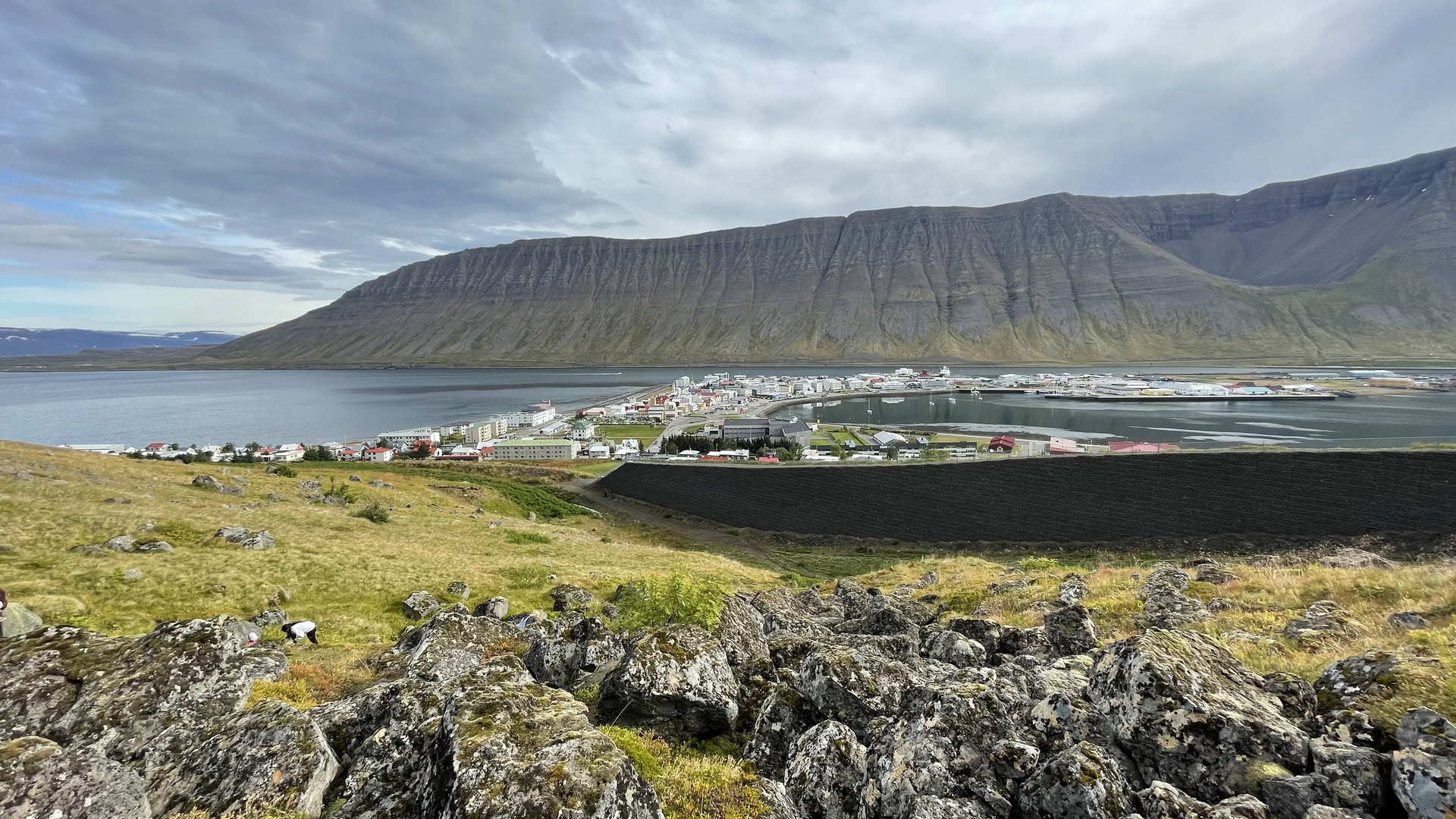
Welcome! It‘s the unofficial capital of the Westfjords: Ísafjörður, the largest
settlement in this northwestern corner of Iceland. Located six hours from
Reykjavík, or 40 minutes as the plane flies, its presence is the exception
rather than the rule for this sparsely populated region. Between its small
population (fewer than 3,000) and being so far from the only city in Iceland,
you might mistake Ísafjörður for a sleepy little fishing town. But, “capital” of
the Westfjords is no perfunctory moniker. Ísafjörður boasts the region’s only
higher learning institution, plus it has museums, a central harbor, and, as
we’ll soon see, some advanced innovation occurring here. Ísafjörður is also
a popular tourist destination, attracting the third-highest number of cruise
ship passengers in Iceland in 2017. 1 Whether Ísafjörður is as rural as its
population density and remoteness implies depends on your definition of
rural, but certainly it is only “out of the way” in a physical sense, not
culturally or economically.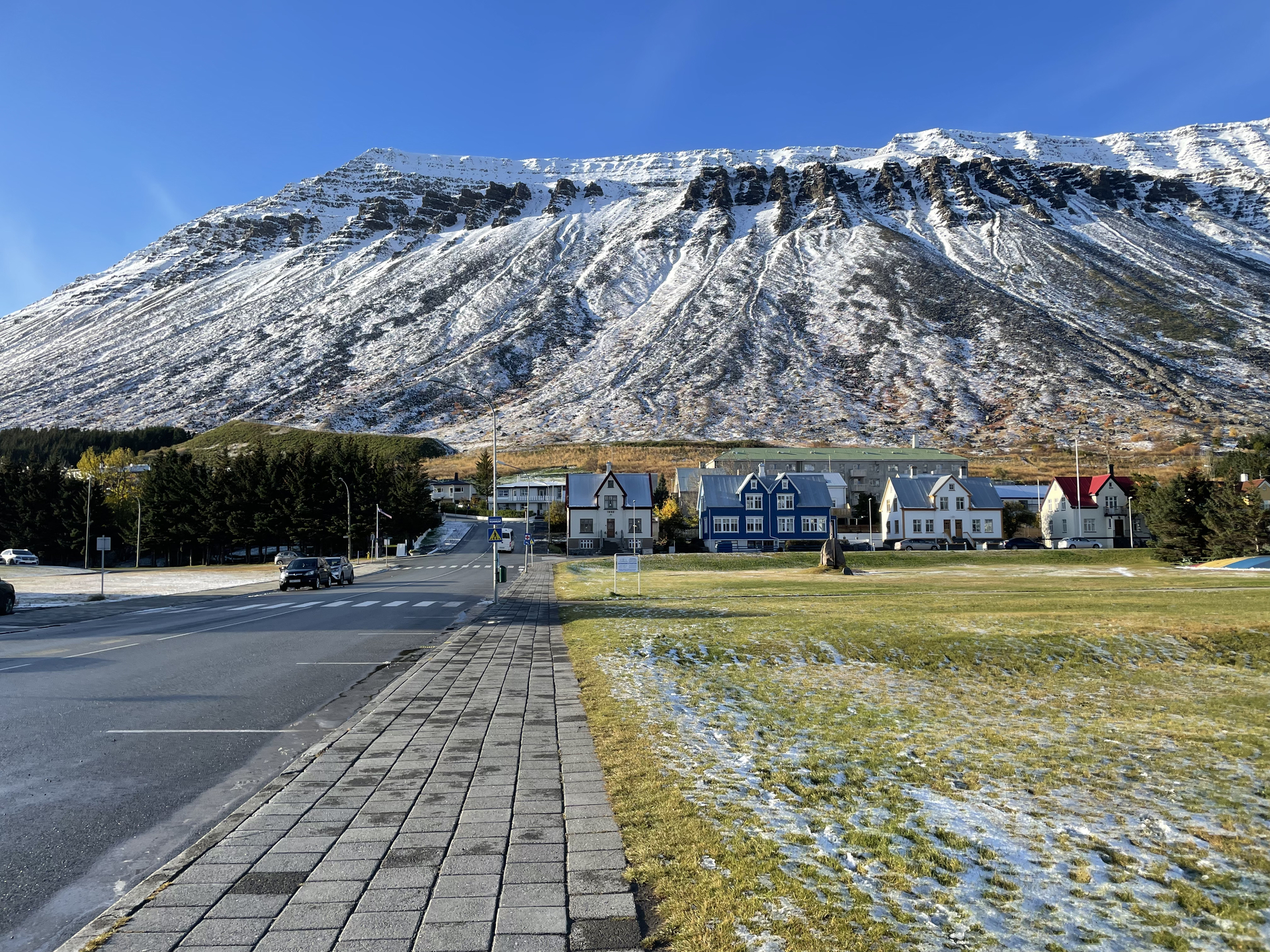
However, it wasn’t always this way for Ísafjörður. At one point it was “just” a fishing town, and the population was shrinking up until the mid-2010s 2 . An increase in tourism, the establishment of a university center, aquaculture,
and other factors have contributed to the reversal of this trend, but as any community surely knows, new businesses and industries can change a
place. How these changes are handled and whether the change is a positive one are difficult (and subjective) questions to answer, but I would argue that many places—be they city, town, or otherwise—want to have a character, a “feeling” specific to them and their location rather than some
disconnected or impersonal genericness. While change is often inevitable,
protecting and maintaining an individuality, a connection to place, is an
important part of communities feeling successful at navigating and adapting
to change.
So, let me take you on an unusual tour of Ísafjörður—through the eyes of
two businesses based here, albeit established in different industries and at
different times in Ísafjörður’s recent history. Each one is tied differently to
the town, and their tie to each other might surprise you! With that to keep
you in suspense, let’s hurry now to start our tour. We’ve already arrived by
plane, so it’s a quick ride from the airport into town and to our first stop.
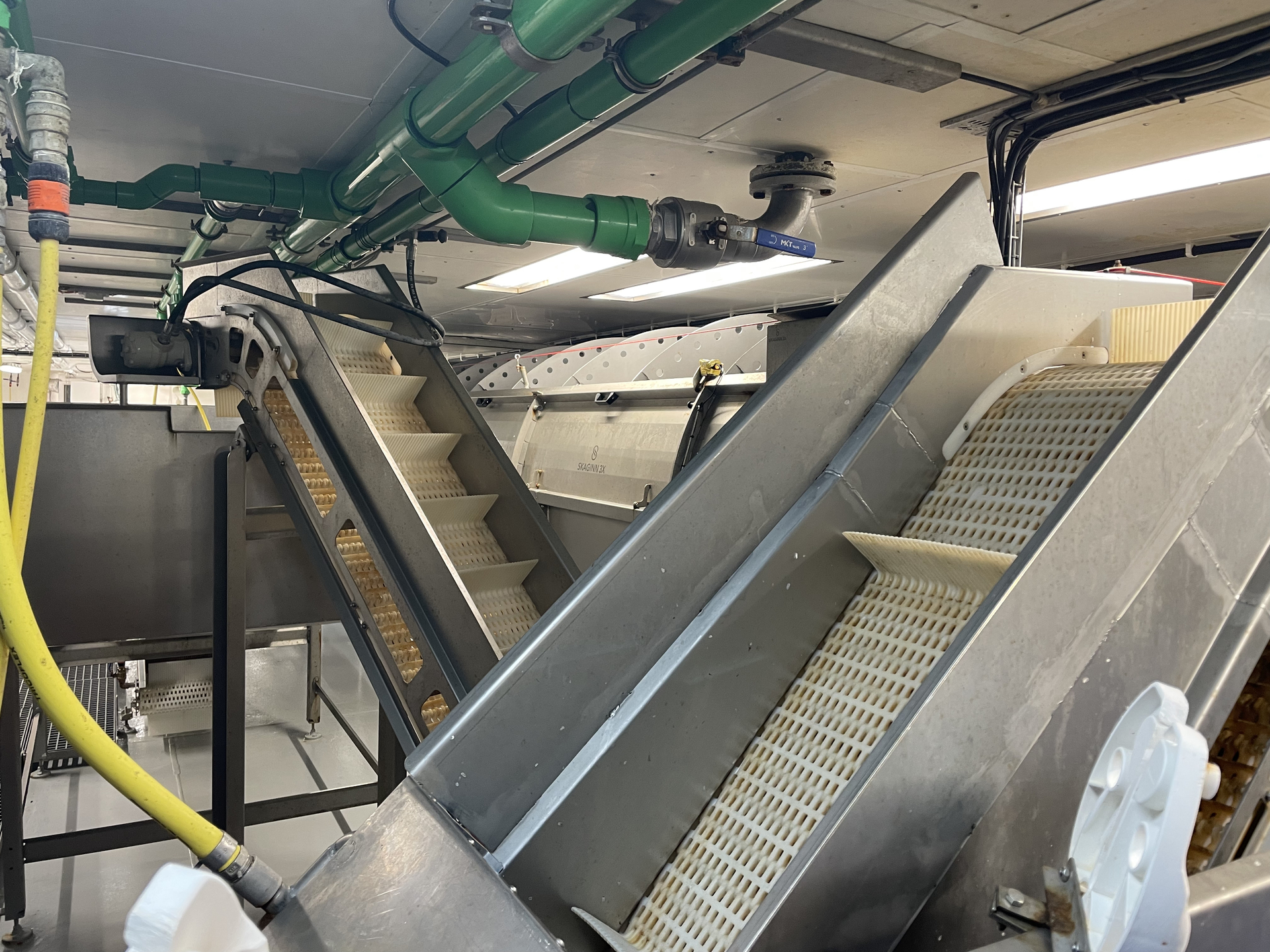
The Three Unknowns
We begin at Skaginn-3X, an “innovative producer of high-tech processing
systems for the global food processing industry.” Founded in 1994 by three
Ísfirðingar (people of Ísafjörður), the company has since expanded to
multiple offices in Iceland (plus one in Norway) and has clientele in various
countries. Often called 3X for short, the company’s name is a tribute to its
founders, three as-yet-unknowns (“X”) in the manufacturing world.
As mentioned earlier, Ísafjörður used to be entirely a fishing town. Like
many places in Iceland, fishing is an integral part of Ísafjörður’s history and
continues to be a dominant industry. Economically, this makes sense: fish
are plentiful around Iceland, and fishing supports a wide network. With
fishing comes not only the boats going out to catch the fish, but also the
processing and shipping of the catch for market. It’s here that 3X enters the
network.
3X brought manufacturing and innovation for fish processing closer to
home: rather than buying equipment from abroad or even from domestic
(yet distant) locales, the establishment of 3X meant that fish processing
machinery could be produced on-site in Ísafjörður and for the wider
Westfjords. In fact, if we were to stop by Ísafjörður’s fishing trawlers in the
nearby harbor, we would see that all three are outfitted with 3X equipment.
As we walk around 3X’s research and development lab, we see another
obvious benefit of this business to the Westfjords: prototypes can be tested
nearby, making it easier for local companies to collaborate with 3X on
designs to meet their needs.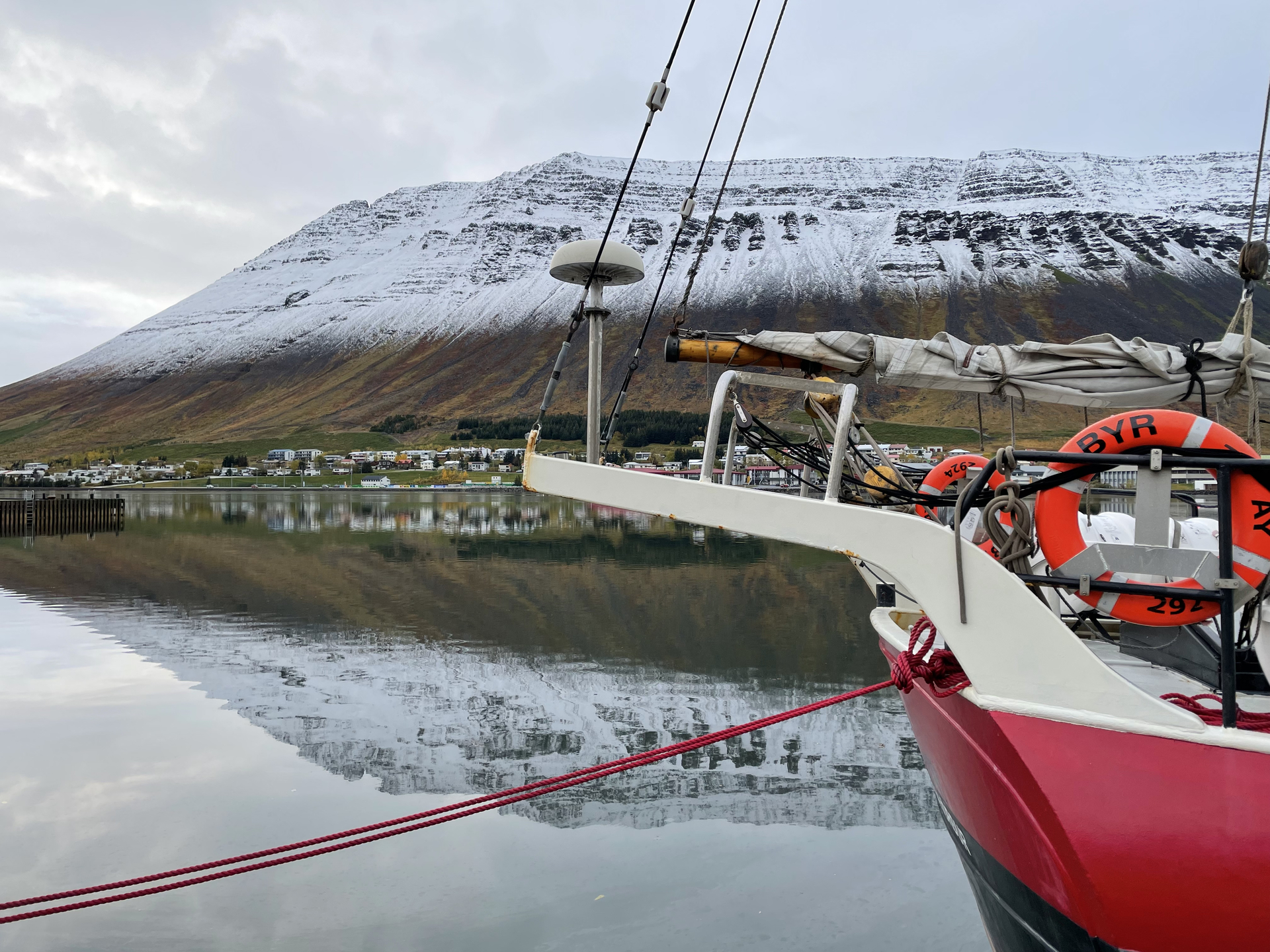
Ísafjörður’s location has other strategic advantages for 3X. Most importantly, the town’s harbor is capable of receiving large ships and is well-connected to domestic and international ports. During our visit, this
vital supply line is in action with a steel delivery underway from a container ship. This is how all the metal and electrical parts for 3X’s products arrive:
shipped to the harbor, brought in from abroad. The final product is then shipped out the selfsame way. Indeed, the harbor is key to 3X’s ability to expand beyond the Westfjords and its position as a local company with global reach.
The company staff itself also has an international makeup, although the
Ísafjörður site employees we meet on our tour are largely Icelanders. While
most of them moved here from other parts of Iceland, 3X also creates
highly skilled employment opportunities that incentivize Ísfirðingar to stay
(or come back). Furthermore, the presence and ongoing success of 3X has
contributed to the changing image of Ísafjörður from a by-gone fishing town
or mere tourist destination to one where innovation and
opportunities—even in traditional sectors like fishing—are thriving.
As we say bless to Skaginn-3X, we turn our back to its unassuming gray
façade and walk down the road to the next business. It‘s a good time for a
snack, and our second stop doubles as the perfect place for this.
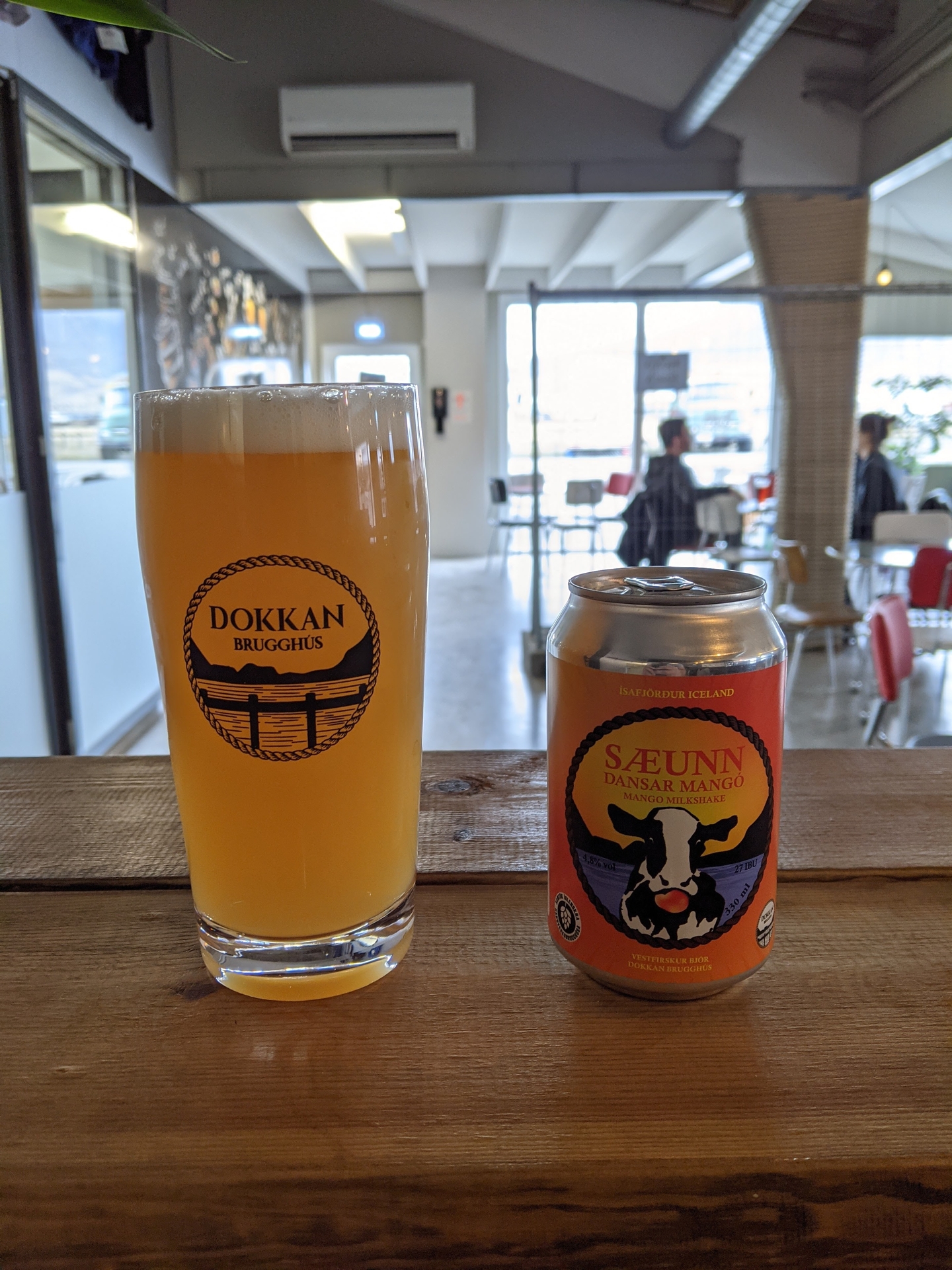 C‘mon Down to the Docks
C‘mon Down to the Docks
Bundling in through the front door, we‘re greeted by a warm, casual interior and the light buzz of chatter. There are no cruise ships in today, so some
locals have turned up at Dokkan to enjoy a late afternoon beer. While we order some light food, take a look around. This place is a special one, and
like a work of art, the more you look, the more you see here.
Established in 2018, Dokkan Brugghús is in fact owned by one of the original founders of Skaginn-3X! This family-owned and -operated brewery offers an ever-changing selection of beers on tap as they experiment with new brews and new ingredients. Each one is named after a feature of the Westfjords. Take for example their most popular beer, an IPA called
Dynjandi for the iconic waterfall south of Ísafjörður. Or their mango milkshake beer, Sæunn Dansar Mango, named after Sæunn the cow, who was famous for swimming across a nearby fjord in the 1980s to escape the slaughterhouse (she lived, by the way, the farmer was so impressed with her feat). Feel free to sample these two or more; the bar offers customizable flights of beer if you can’t decide which one to try.
Dokkan was opened with two goals in mind: to make good beer, and to
make good money. Or more accurately, to take advantage of the
opportunity offered by the increasing numbers of tourists to Ísafjörður,
which would give beer-making a financial chance. Many foreigners enjoy a
good drink to rest and cap off their visit, and a brewery right by the cruise
ship dock makes for a convenient location to do just that. The brewery also
provides the owners (as Ísfirðingar) a chance to share more about
Ísafjörður and the Westfjords with visitors before they leave. Besides the
beer names, the brewery is decorated with artwork and photos depicting
some of Ísafjörður’s history or features like Iceland’s volcanic-filtered water.
If you look closely at one of the old photos of the waterfront, you might
even notice that the dock paneling matches the design on the barfront. This
is no accident, but an intentional tribute to the brewery’s location and
namesake. Icelandic has its own word for “dock”—bryggja—but historically,
English-speaking sailors were frequent visitors and of course referred to it
in their own language. The word became so common that Icelanders
adopted it as their own and “Icelandicized” it, making a new word, dokkan.
Thus, even in its name, we can see Dokkan’s dual orientation outwards
towards the tourists and inwards to Iceland (Ísafjörður).
As we continue looking around the brewery, the crowd has started to pick
up since we entered. The owners explain that it’s pub quiz night, always a
popular event for people. Although Dokkan was meant in part for tourists,
you could say it also has a third goal: to be a wholesome, friendly space
that brings people together to socialize and have fun. You might notice the
couches by the window with the inviting pillows, or the chess game that
was on a table outside. Tourists and locals alike enjoy the laidback
atmosphere and good conversation that comes with the likewise good beer,
and this is all by design thanks to the vision of Dokkan’s owners.
Conclusion
Before we wrap up (and let you get ready for pub quiz), I want to leave you
with a few thoughts on what we saw today. Ísafjörður has changed a great
deal from its fishing heydays, and it continues to change as it recovers from
its longtime population slump. We can see some of what‘s driving that
change, and reversing the slump, reflected in “forward-facing” businesses
like Skaginn-3X that focus on innovation and technology which attracts new
(outside) people and establishes a new kind of industry in Ísafjörður. While
yes indirectly connected to Ísafjörður‘s roots in fishing, it is clearly a new
way of being a “fishing”-related company and therefore connects itself
differently to its location. On the other hand, an even younger business like
Dokkan, which technically has no connection to traditional Ísafjörður
industry (beer was illegal until 1989 in Iceland), is very much grounded in
Ísafjörður‘s history and the character of the Westfjords in general. And,
important to note, is that both businesses leverage global connections
regardless of their methods, acknowledging the reality of our globalized
world.
Though independent of each other, these two businesses are part of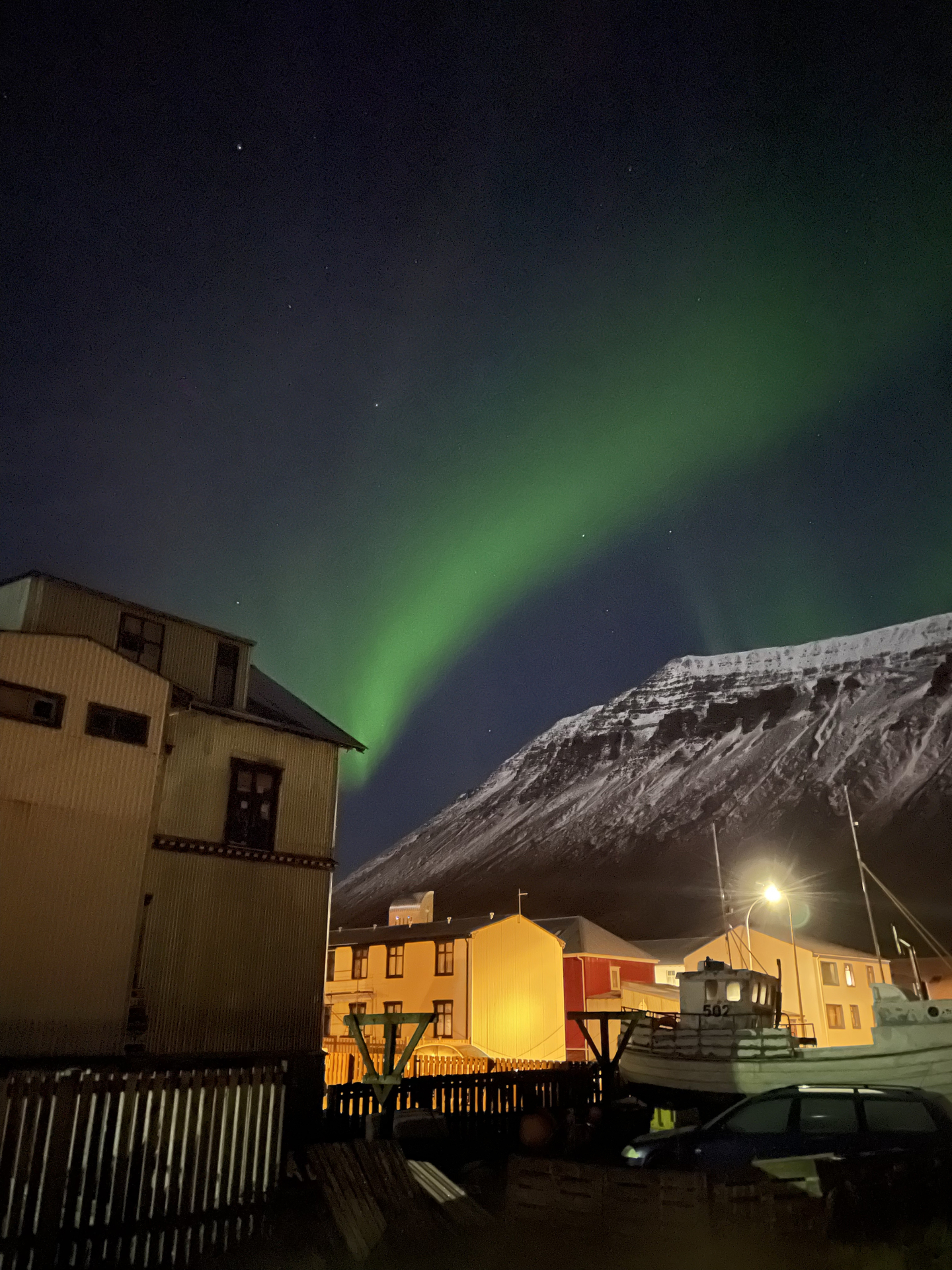
Ísafjörður‘s adaptation to change: one bringing it forward into something new and vitalizing, the other keeping it rooted to its history and looking back to the past, both using external interconnections to their advantage. In
these processes, Ísafjörður‘s character is being reinvented and preserved simultaneously. As I said initially, whether a community’s given change is
positive or not depends on who you ask, but maintaining an individuality is an important part of the community feeling that said change was positive, or at least not unwelcome. Perhaps the presence of both forces—
reinvention and preservation—provides a stronger defense against losing any character altogether by keeping it updated and relevant but connected.
So, with that on your mind, go—enjoy the trivia night, the local beers, and the local people. And maybe once you’ve broken the ice with a few rounds (of trivia or drinks, your choice), see what they think about the changes
Ísafjörður‘s been undergoing. Assuming you meet an Ísfirðingur, of course, and not a recent transplant.
Höfundur: Brittaney Key
Myndir: Brittaney Key
